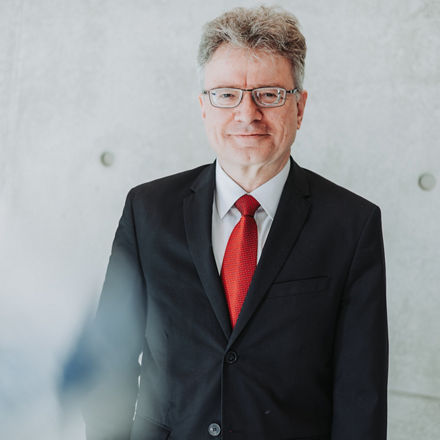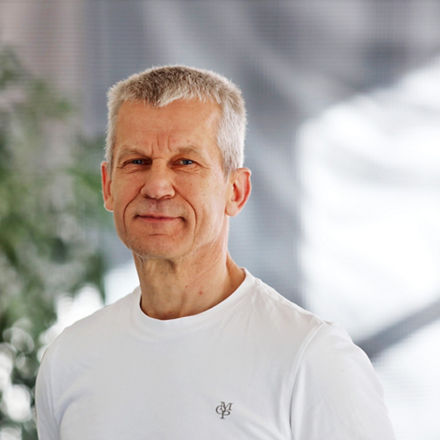Evonik, the Leibniz Institute for Catalysis (LIKAT), and Ruhr University Bochum have discovered a way to directly convert CO₂ into essential raw materials for the chemical industry.
Carbon dioxide (CO₂) is widely known as a greenhouse gas, but it is also an underutilized raw material. In a joint research project, scientists from Evonik, LIKAT, and Ruhr University Bochum have developed a process that uses CO₂ to produce chemical compounds essential for plastics, cosmetics, and cleaning agents.
ELEMENTS-Newsletter
Get exciting insights into Evonik's research and its societal relevance – conveniently delivered to your email inbox.

»The direct use of CO₂ as a raw material is a milestone for sustainable chemistry on an industrial scale«
Prof. Robert Franke Professor at the Chair of Theoretical Chemistry at Ruhr University Bochum and head of a research group at Evonik Oxeno.
Science and Industry United
“We wanted to demonstrate that CO₂ can also be part of the solution,” says Robert Franke, project leader at Evonik and professor of theoretical chemistry in Bochum. Close collaboration with LIKAT and Ruhr University was crucial in translating fundamental research into an industrially relevant process.
This research project is an excellent example of the innovative potential that arises when industry and science combine their expertise. Evonik has long been committed to such collaborations, aiming to accelerate the market adoption of sustainable technologies.

Key to Decarbonized Carbonylation
The new process focuses on carbonylation, a chemical reaction that traditionally uses carbon monoxide (CO) to convert olefins—a group of hydrocarbons—into esters or carboxylic acids. The challenge with CO is that, while it is an effective reactant, it is toxic and typically derived from fossil sources.
The new process completely replaces CO with CO₂, avoiding the use of a toxic intermediate while repurposing a greenhouse gas as a raw material. The challenge lies in the fact that CO₂ is chemically more stable than CO, making it harder to activate. This is where green hydrogen comes into play. Produced via electrolysis using renewable energy, green hydrogen, in combination with a specialized catalyst system, provides the activation energy needed for decarbonized carbonylation.

»The development of this catalyst system is an example of how targeted research can contribute to the defossilization of the chemical industry«
Dr. Ralf Jackstell Team Leader at LIKAT
Scientifically Grounded and Industrially Relevant
The researchers describe their new two-step process in the prestigious Journal of the American Chemical Society. First, an iridium catalyst converts olefins, CO₂, and hydrogen into alkyl formates. These intermediates are then transformed into linear esters by a palladium catalyst. A special ligand and an acidic additive ensure high selectivity and efficiency.
“The challenge was to chemically activate CO₂ in a way that allows it to be converted into the desired products under conditions that are also practical for industrial applications,” says Franke. The team appears to have succeeded: the process works with various starting materials and shows potential for industrial applications.

“The development of this catalyst system is an example of how targeted research can contribute to the decarbonization of the chemical industry. Here, CO₂ is not treated as waste but as a valuable raw material,” says Dr. Ralf Jackstell, team leader at LIKAT.
This collaboration between industry and science demonstrates how sustainable chemistry can be advanced and how a greenhouse gas can become the starting point for innovation.


